Just west of Northampton in the well-heeled village of Church Brampton is a heathland track of land where Northamptonshire Co GC lies. Colt designed and likely oversaw its construction while developing Swinley Forest. At the time Colt was working on NCGC a halt existed between the 9th green and 10th tee making it relatively easy to stop at the club for periodic visits. I don't think Franks Harris Bros built the course as there isn't the typical shaping often associated with this firm.
The course impressed me because of its steadfast reliance on true minimalism. The terrain dominates the design in a manner which I think is a bit unusual for Colt. The course has the feel of a Braid or Fowler course and this impression is due mainly to the greens. Colt is famous for raising or placing his greens on plateaux. This isn't the case at NCGC. While the land dictates that some parts of many greens have to built up to make them playable, for the most part, the entrances are at grade level and this is the over-all feel presented both visually and from a playing perspective. For instance, there are several greens which run away from the fairway. This is a feature I would normally more closely associate with Fowler or Park J. However, some things remain the same about Colt courses the world over and NCGC is no exception. The course plays much longer than the yardage suggests! Sure, the course has been lengthened, but the idea of stretching the player was firmly ensconced before the addition of back tees.
The course begins by heading straight down a gentle slope for four holes. At least three of these greens run with the terrain and away from the player. Somewhat unusually, the 1st is a longish two-shotter. Below is a view of the green from well ahead of the driving zone.
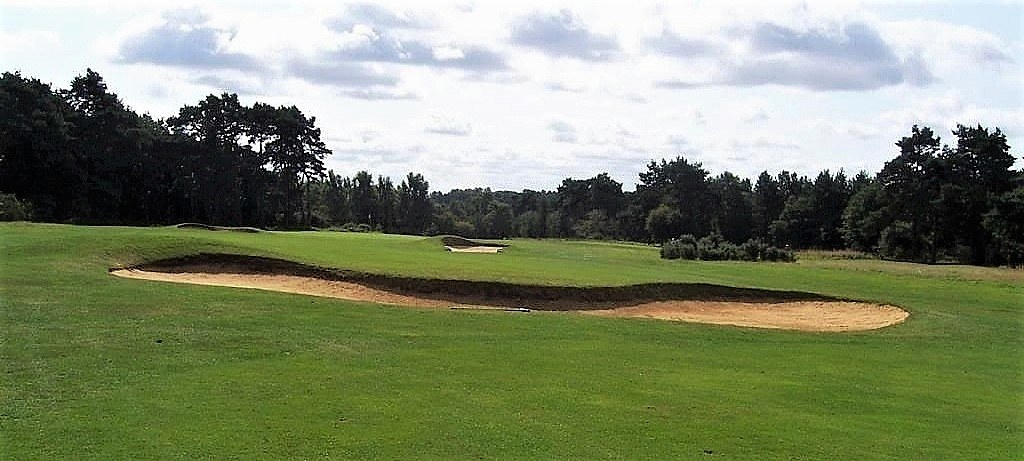
The 2nd green is typical of many of the putting surfaces. One side of the green is built up to counter-act the terrain. Also evident is the placement of the bunkers; a great many are sited well short of the greens. I was impressed with the short 3rd. The green slips away from the tee much more severely than it seems. There is a hollow some 20 yards short of the green that used to be a bunker. Along with many other bunkers, Braid removed the sand. Still, one can get the sense of the importance of the run up shot in the old days and perhaps how much less keen our courses are today.
The 4th runs a bit more than gently downhill, but this isn't what the golfer is focused on off the tee. The shot used to be totally blind and very intimidating. In recent years a gap was cut through the gorse giving the golfer some idea of the shot at hand. I think perhaps the hole may play better as a shorter par 4, thus tempting players to have a go at this reachable par 4. All too often these days the focus of clubs is to challenge the golfer with yardage rather than temptation. OK, when Colt designed this hole very few could reach this green, but this is an instance of where the improvements in equipment may have enhanced the quality of the hole.
The design of the approach is very clever indeed. There is a large dip shy of the green which runs sharply down the hill. Only a well struck shot will hold the green on the fly. The alternative is to bump a runner through the swale, but one must gain the angle on the right of the fairway off the tee to properly attack the green. It is on this hole that one can see the problem of trees. This green should have a skyline effect. While the trees rarely crowd out play, there are delightful views which are blocked. The course could do with a tree management program that would serve the dual purpose of enhancing the heathland aspect of the course and opening up long range vistas.
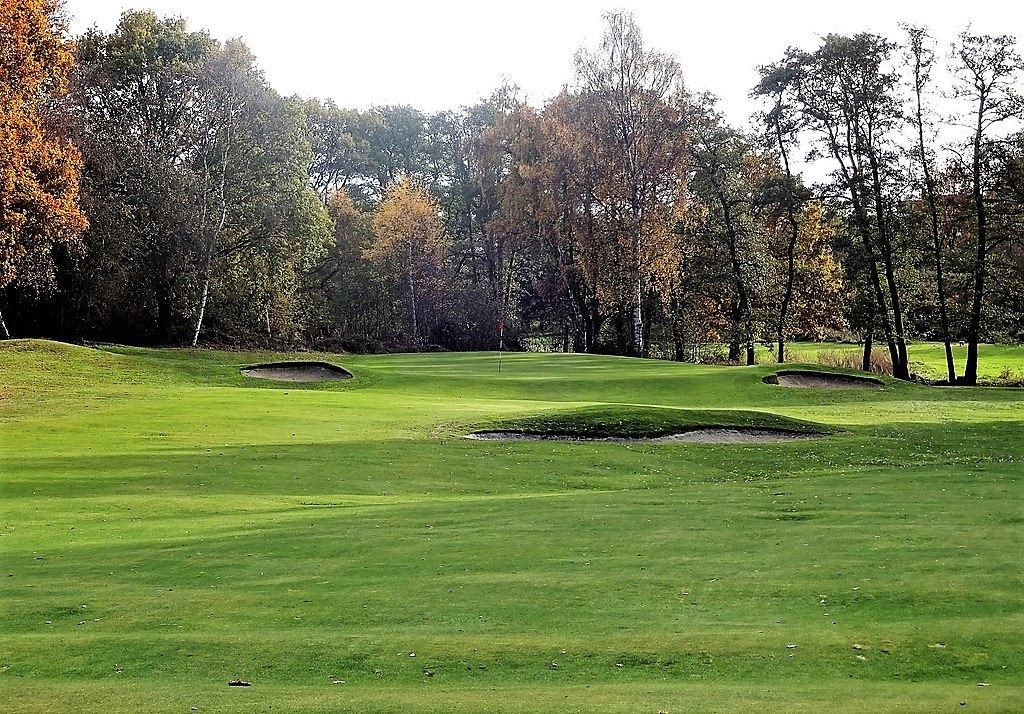
#s 5-7 complete a loop started at the 4th which brings the golfer back to an area near the 3rd green. The fifth is a long, tough par 4 in which the golfer bangs his drive into a slope, a prominent feature on a few of the longer holes! In preparation for hosting 2017 Open Regional Qualifying, the gorse in front of the ladies tee was mercifully removed.
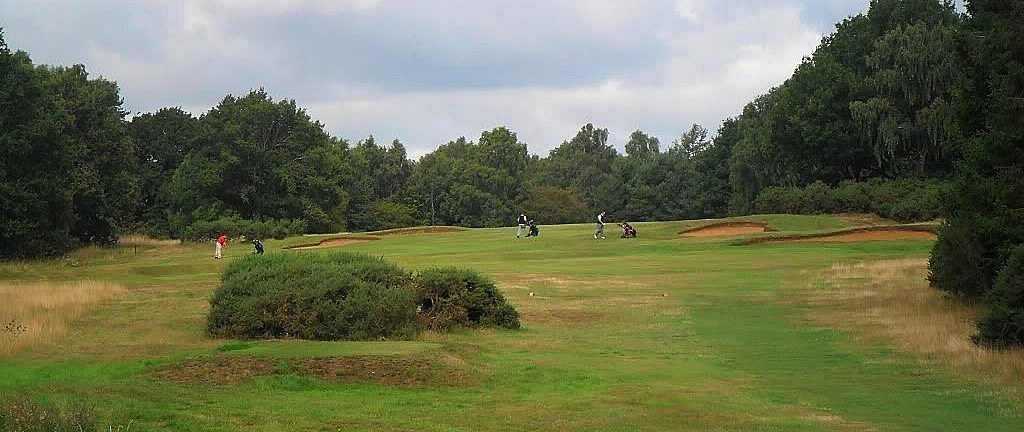
The second is likely blind to a green sloping hard from front right to back left. This photo highlights what can't be seen from the driving zone. The bunker is well placed to penalize the over-ambitious golfer. This is an excellent hole compromised by modern ideals of over-emphasizing length as the main challenge. One effect of narrowing fairways over the years is the likelyhood of losing a ball. It is very easy to hit the approach a bit left and/or short of the bunker and have it bounce left down the hill into gorse (~7 yards left outside the photo...which has been thinned in recent years). In Colt's day I am sure many of the fairways were much wider. Evidence of this can be seen on various holes where bunkers are blocked from view by trees. In essence, Colt had these bunkers eating into fairways whereas now many are stranded in the rough.
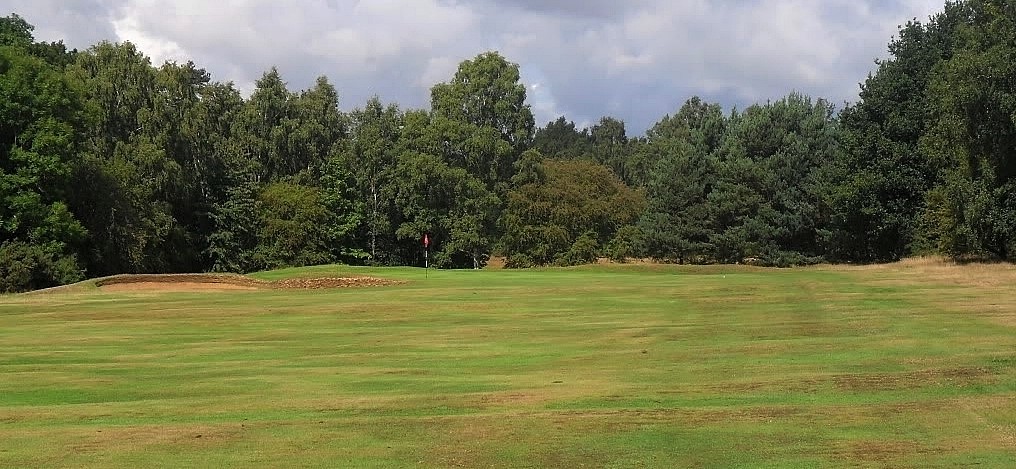
Tree encroachment rears its ugly head here and there. The very long par three 6th is a case in point. A Tree limit the options of the player off the tee, but the specimen in question is far too wonderful to even contemplate cutting down. The last hole of this loop is arguably the best. I walked onto the tee of #7 and was starting to admire the view when my host took us back, then up, then back some more. Herein lies the problem of creating tees set well back behind the original tees, the walk is usually awful if only because we are striding away from the ultimate goal of the 18th green. I usually find this sort of progress disheartening, but in this instance I can understand and appreciate what Mr Sinclair, the architect, was trying to achieve. Unfortunately, not nearly enough trees were taken out to provide for this tee angle and thus the view of the hole and mainly a carry bunker to the left is sacrificed. As it is now, one must hit a draw off the tee to hold the fairway and another banging of the drive into a slope is created.
Just as the fairway cants left to right so does the green. One aspect of these greens which is admirable is that the placement of the approach varies greatly from the best spot being long, short, right or left. This is an excellent hole and the addition of the back tee is a boon if more trees are cleared out. Also notice the the presence of so many trees and shrubs which are not inherently attractive or serving any function.
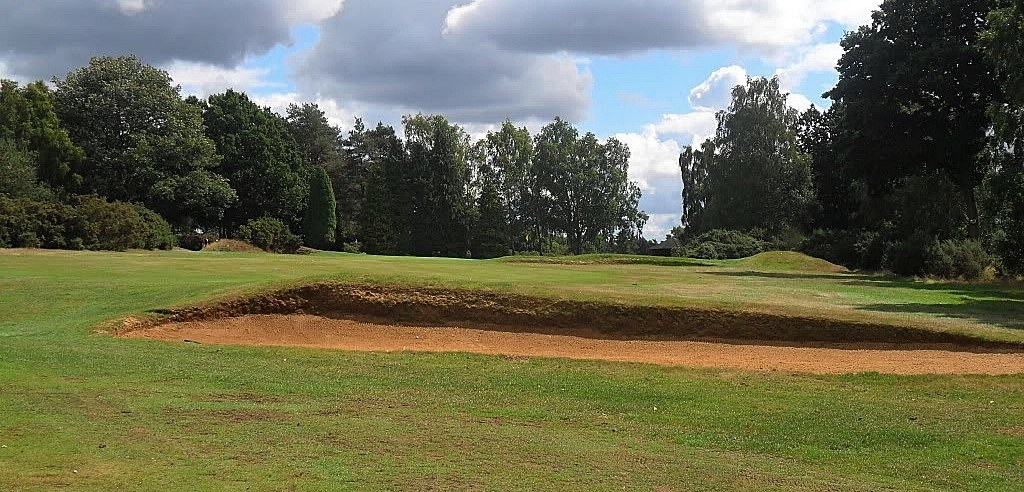
This bunker guards the high left side of the green.
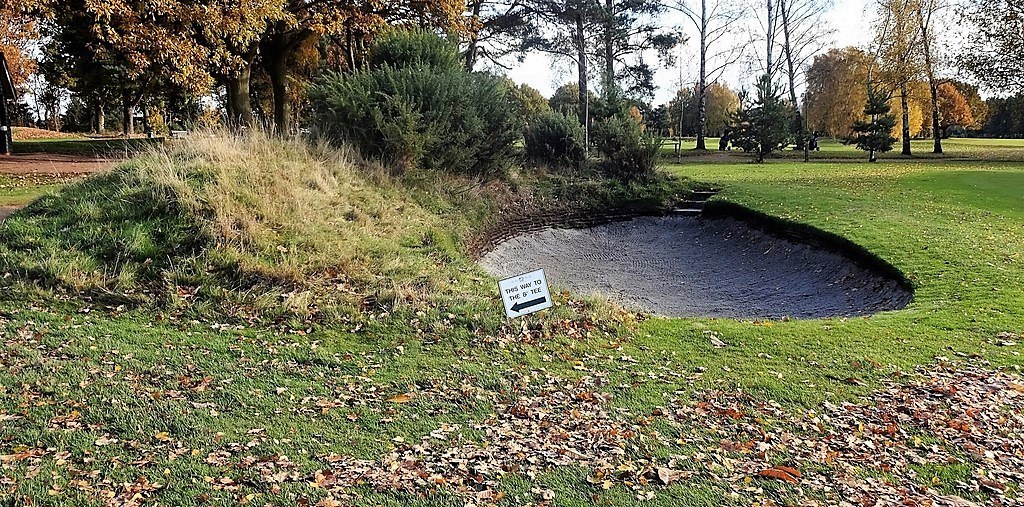
We now come to the 8th, a very clever hole which was the old 4th. Like Notts, NCGC built a few holes which can take the golfer back to the house after #6. I think this necessitated changing the numbering of the holes. The tiger line is left over the junk with the dual risk of not making the blind carry or hitting humps and kicking right or left. One can also hook a drive and hope to catch some mounds short and right of the green for a kick in. There is also the option of laying up, which is most sensible for most people most of the time. The 9th features a severe green sloping back to front and a fairway cut in two which will give pause to guys who can hit it 240ish.
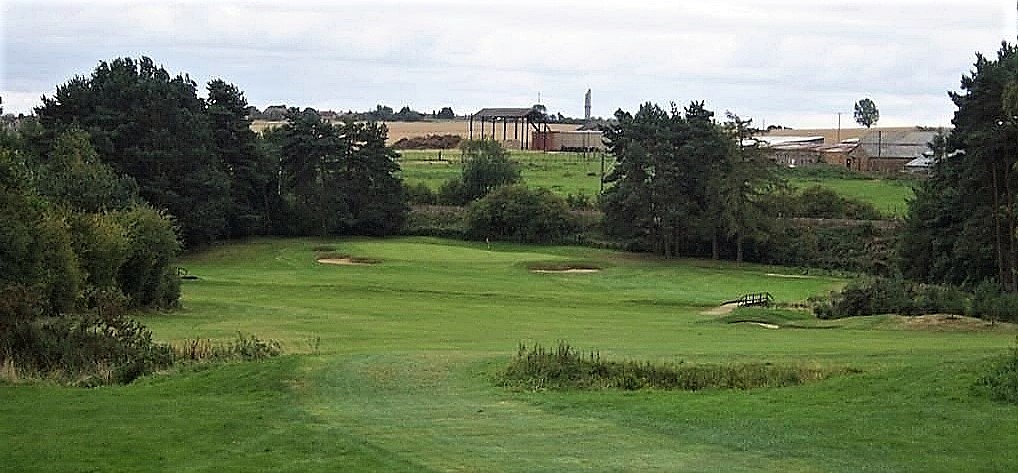
We now pass under a railroad bridge, where Colt surely would have used the halt in his day, to play five holes of which the 10th is probably the best. I think Colt's design originally had much more fairway to the right, past the bunker, thus not dictating the line of play as is the case today. For that, this is still a very fine hole. There is a large dip between the bunkers, the second being a recent addition.
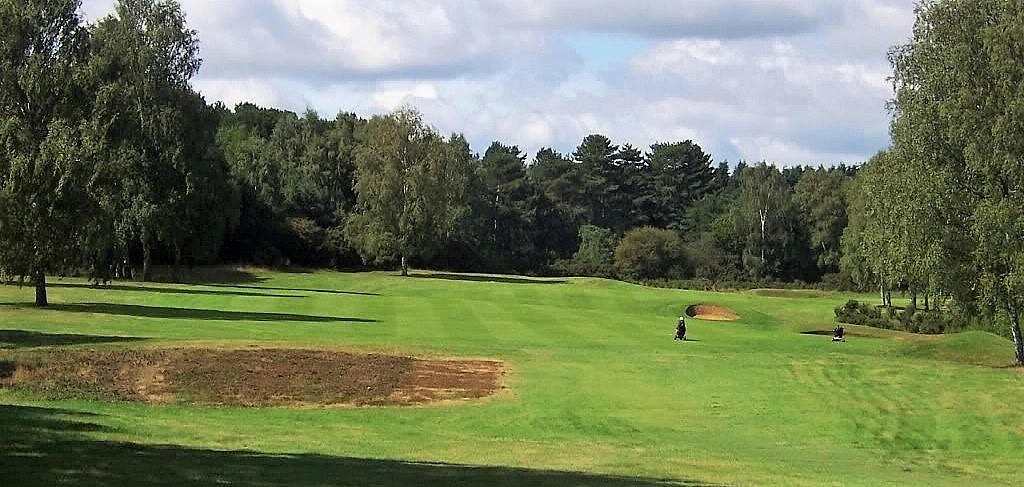
Even good drives hit well left will collect to the right side of the fairway making the second shot, which can be blind, problematic.

Here is a good look at variety of bunker styles at NCGC. At their best the bunkers are very attractive and well placed.
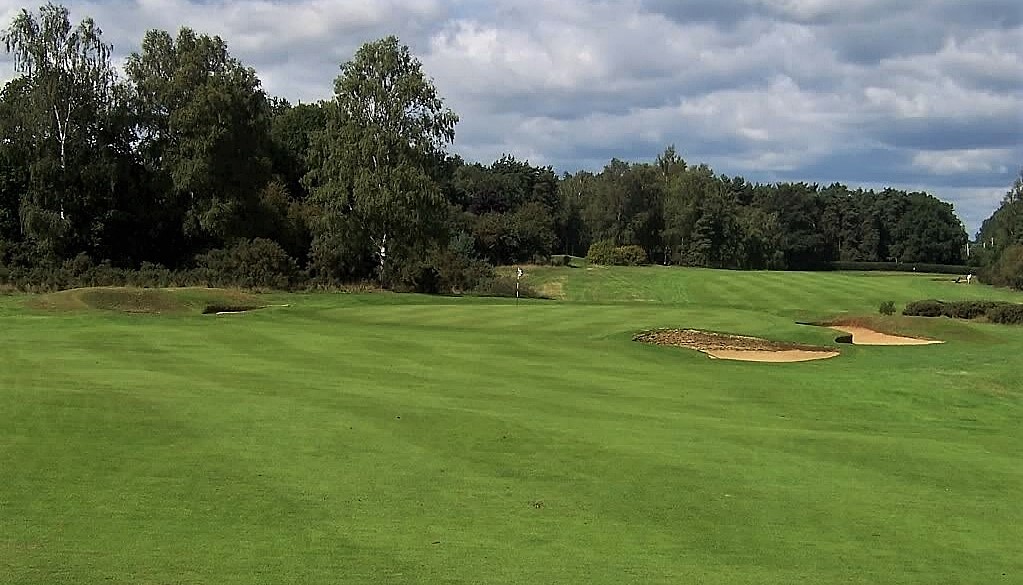
The 11th hole has the potential to be better because of the green site, but the new tee pushing this hole back some 50 or 60 yards is another which limits options as a long hook is required just to get within range of the green for a blind second. A lovely par 3 with a bit of a false front, the 12th encourages play to the back of the green, but the putt coming back can be very dicey.
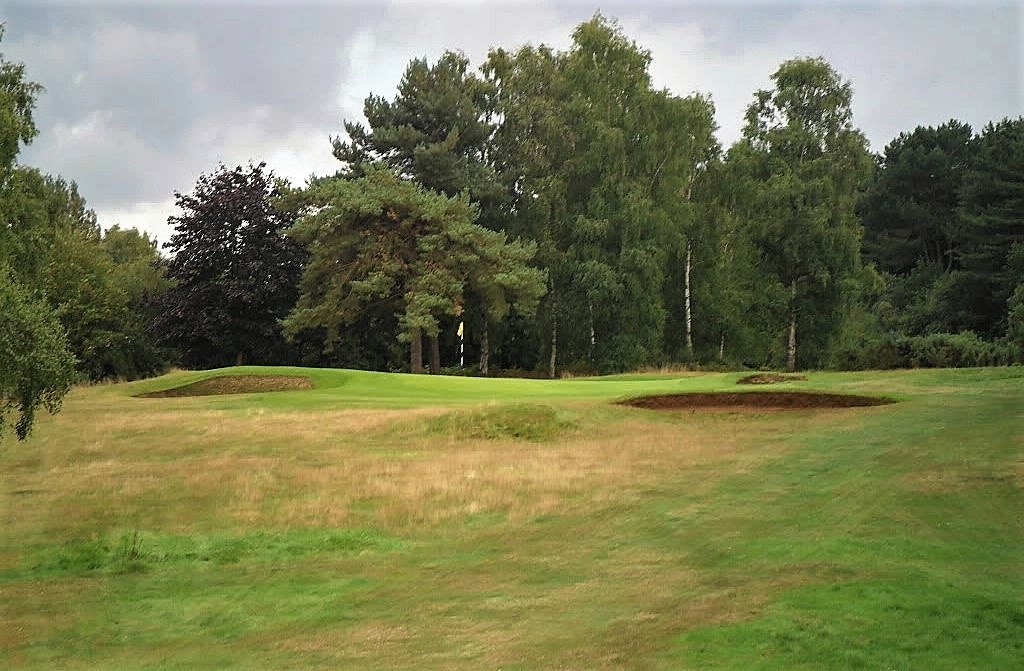
The entire 13th slips left and this feature is heightened on the front right to rear left running green. This is certainly one of the best greens on the course.
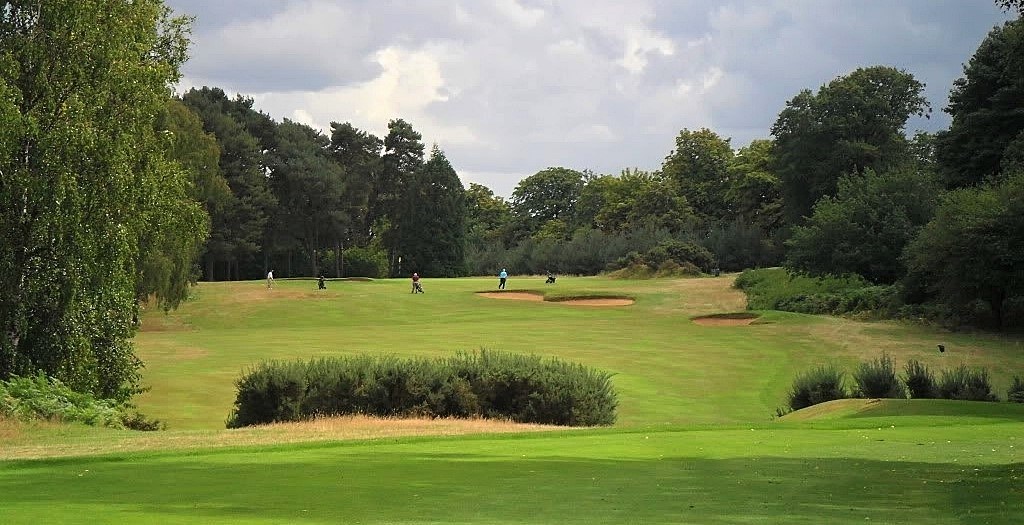
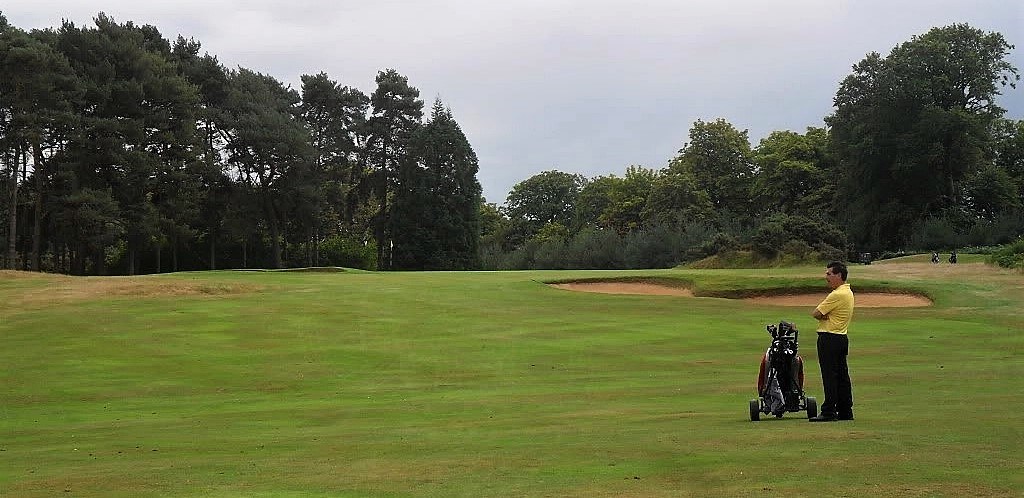
#14 is a beautiful downhill/uphill hole which heads back toward the 10th tee. As the green moves severely right to left a wonderful old cross bunker guards the optimum left side of the fairway. Curiously, the club seems to have created a set of tees left of the 13th green. From this angle it is nearly impossible to hit the fairway because trees on the left block out so much of the tee shot. Once again, I understand creating a new shape for the hole, but the job is half done...a lot more trees need to be removed.

The finishing stretch is punctuated with the very difficult 16th & 17th, but I think the final short hole, #15, is the pick of the bunch. The water hazard is used expertly in conjunction with a green flowing from the left toward the water.
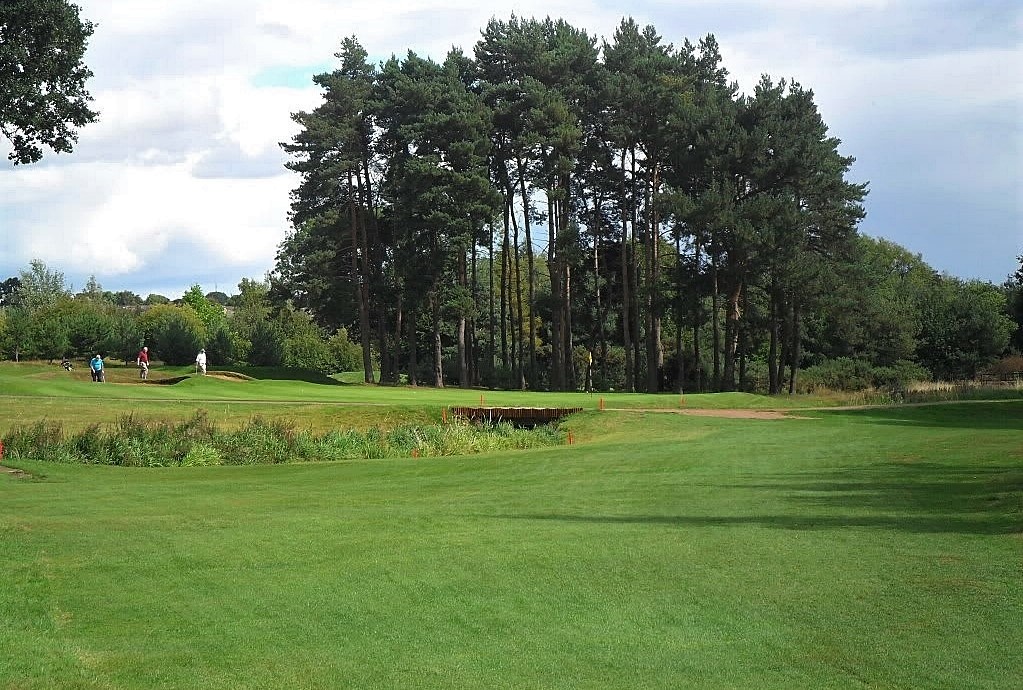
The 16th is a long, tough down and up hole with a blind approach. However, what makes this hole stand out is its double valley green. This feature is completely at odds with every other green and it reminds the author of a few greens at Huntercombe for its idiocentricity. The play into this green is from the left of the photo.

The penultimate hole is not unlike the 16th save for the green. It is a bit longer and the golfer bangs his drive into a slope off the tee. While a difficult hole because of its length, there isn't much to admire. The home hole offers a bit of respite as a reachable par 5 of 510 yards, though it doesn't help lift the feeling that the finishing two holes don't live up to the remainder of the course.
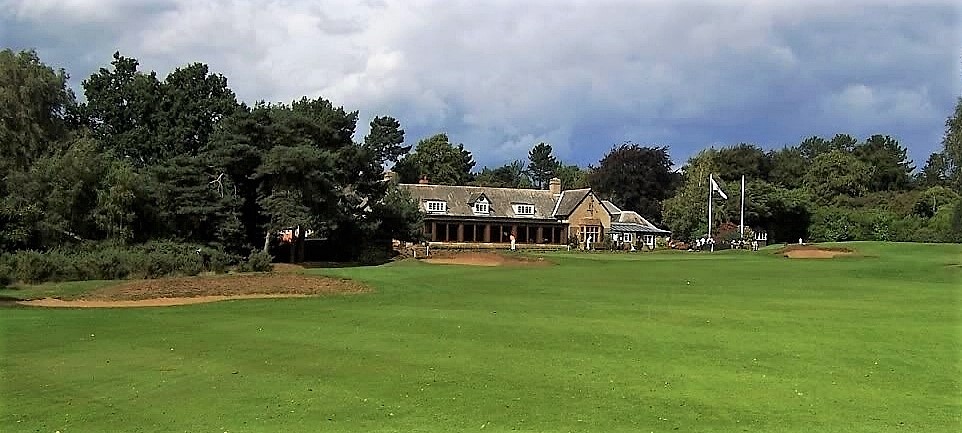
Its difficult to assess NCGC. There is a load of subtle architecture which I have a lot of time for, but there is also the glaring problem of trees which not only compromise some of Colt's design principles but also detract from what should be a visually lovely course. I might also say the mowing lines are somewhat perplexing here and there. That said, there is no doubt there are many fine holes and the course is somewhat unique for Colt in that it may represent a turning point in his career. I think Colt began to move much more dirt beginning with Swinley Forest and really set the bar for what modern architecture would look like. From this point of view, Northamptonshire Co seems to be a blend of old school (little movement of dirt) and new school with strategically placed hazards. Most golfers believe that great courses reveal themselves slowly or hit one like a brick. NCGC is certainly a course which may take several rounds to fully appreciate. For instance, after this latest game I realized how wonderful the course plays from the tee. I have already mentioned the good par 3s, but the other holes have a great variety of narrow, wide, uphill, downhill and sloped tee shots. For this reason among others, any serious student of Colt should place Nothamptonshire Co on his "must see list". 2016
As a side note, Lorne Smith, a very interesting and gracious chap with a history of playing the finest courses of GB&I stretching back at least 40 years is a member of Northamptonshire Co GC. He is currently developing a website focusing on the courses with "fine" grasses (as defined by the famous green keeper Jim Arthur) and the "joy to be alive" feeling. His guide (with minor tweaks) is F Pennink's Golfer's Campanion. The site is well worth a look:
http://www.finegolf.co.uk/ Ciao